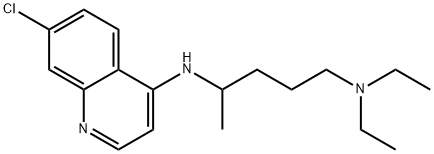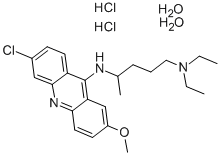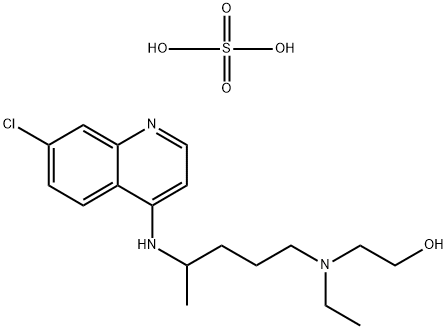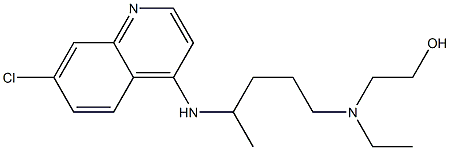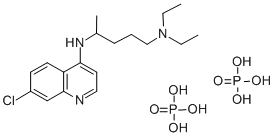PRODUCT Properties
| Melting point: | 87° |
| Boiling point: | 475.41°C (rough estimate) |
| Density | 1.0500 (rough estimate) |
| refractive index | 1.6010 (estimate) |
| storage temp. | 2-8°C(protect from light) |
| solubility | Chloroform (Slightly), Methanol (Slightly) |
| form | Solid |
| pka | pKa 8.4(H2O
t = 20) (Uncertain) |
| color | White to Light Brown |
| Odor | Odorless |
| Stability: | Stable, but light sensitive. Incompatible with strong oxidizing agents. |
| IARC | 3 (Vol. 13, Sup 7) 1987 |
| EPA Substance Registry System | 1,4-Pentanediamine, N4-(7-chloro-4-quinolinyl)-N1,N1-diethyl- (54-05-7) |
Description and Uses
Chloroquine is the most effective of the hundreds of 4-aminoquinolines synthesized and tested during World War II as potential antimalarials. Structure–activity relationships demonstrated that the chloro at the 8-position increased activity, whereas alkylation at C-3 and C-8 diminished activity. The replacement of one of its N-ethyl groups with an hydroxyethyl produced hydroxychloroquine, a compound with reduced toxicity that is rarely used today except in cases of rheumatoid arthritis.
Chloroquine used in the treatment of malaria and MDR-strains. It is a COVID19-related research product.
Safety
| Symbol(GHS) |  GHS07 |
| Signal word | Warning |
| Hazard statements | H302 |
| Precautionary statements | P264-P270-P301+P312-P330-P501 |
| Hazardous Substances Data | 54-05-7(Hazardous Substances Data) |
| Toxicity | LD50 oral in rat: 330mg/kg |

